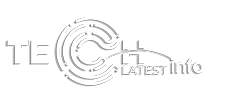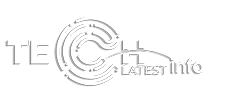Description
The Future of Medical Technology in 2023
Dr. Martin Stow, chair and director of Nexus the community of companies with high growth around the world that has an office in Leeds, on the University of Leeds campus, gives his predictions for the medical technology industry in 2023.
The COVID-19 pandemic brought two important facts to the light. It firstly, it highlighted the importance of a functioning healthcare system . Secondly the global vaccination programs made us aware that it is important to take urgent measures should be implemented.
The pandemic may have slowed down and is now time to take action to address the most pressing problems healthcare services face including health inequalities and lengthy waiting durations. The tech-oriented “third industrial revolution” is expected to play a significant part in this regard, and could lead to advancements in monitoring, screening as well as diagnostics and treatment.
Self-diagnosing increases
In the field of medtech there is an increase in importance on wellness. That is, bringing people into an attitude of health and wellness through educating them with “nudges” to steer them in the positive direction. The main message is that even if small changes are made now it could result in an impact on the near future.
Self-testing is expected to increase in frequency. In the aftermath of the pandemic, many people from all over the world have integrated lateral flow tests into their routines and have grown more accustomed to conducting these tests on their own. This means that we’re likely to see a rise in the usage for IVD (in-vitro diagnosis) testingusing saliva or blood, which will yield quick results that allow individuals to be more aware of their health.
The benefit of this is increased awareness of health issues, that can also help lower the strain on health professionals, such as the GP. This is already happening by using “wearable” technology – specifically smartwatches, which provide information about heart rate and intake of oxygen, calories consumed and steps count, that wearers can monitor all day long.
Therapeutic digital media
There could also increase the usage of digital therapy (DTx) that is a research-based method of treating patients’ illnesses or ailments. DTx is software-based and makes use of digital inputs, such as mobile devices, apps as well as the Internet of Things to provide customized health plans to every patient. This reduces the demand on health care services by allowing patients to manage their health issues on their own and resulting in improvement in the living quality.
A previous example is the use of digital technology to deliver the behavioural treatments for diabetes. A study conducted as early twenty years back discovered that changes in diet and exercise routines early could reduce the chance of developing type two diabetes.
There is an increasing amount of drugs that have been approved that let patients manage their symptoms themselves. Due to the technological advances brought by the epidemic I can only imagine this growing and, given the strain health care services are currently under this is only an improvement.
More durable supply chains
The impact of the pandemic on health services have placed the medtech industry under more pressure to meet the soaring demand. It exposed the weaknesses of supply chains and also revealed flaws in the performance. It was ultimately an important learning experience for the industry.
Given that the problems are being addressed, it means that there’s no reason not to act. If this doesn’t happen then future waves of the pandemic as well as supply shocks could be disastrous for supply chains in the same way. The industry should also be aware of other events, including cyberattacks economic crisis, regulatory changes.
To ensure consistency in quality and security of supply Medtech companies need to assess and address any weaknesses on an regularly. This is crucial due to the direct effect that the industry has on the outcomes of patients. These “black Swan” instances aren’t easy to anticipate, but due to the way the medical technology industry is controlled it is essential to be prepared.
Insisting on inclusion
In the developing world the health issues tend to advance further before patients are given treatment. This means that even though huge markets in the developing world like China and India offer great opportunities for growth, any solutions available must be suitable to the needs of the patient in the specific area. This means that offering products and services that have been created and tested for markets in developed countries might not be the best choice for your market.
Businesses will also need to confront cultural hurdles including language barriers. In truth, it’s all about communication, just as it is about technology and medical. At Nexus we are aware of the necessity to move beyond STEM and make use of our global reach – thanks partially to our University of Leeds base – to accomplish this.
There is also a problem regarding representation of data. The medical devices of the past were developed with white, middle-aged males, who live in developed nations in mind. This assumption of the user’s end-user needs to be overturned.
Thankfully, the culture of the industry is shifting to a method that is based on evidence and takes the diverse nature of the potential users into consideration. The “one size will fit all” approach isn’t working here. as with all diseases individuals react to various medical equipment in different ways.
Technology advancement all over the world
Many technologies are now taking on a greater role across all aspects of the industry. Virtual Reality technologies are helping to improve capabilities for designing products, and has also improved learning processes. It means that students get better quality of instruction, while the time needed to complete it is cut down.
Technology has also enabled companies to enhance the effectiveness of drug tests and speed the time to market of new products. In particular, they can conduct in-silico tests through computer simulation. This not only means increased efficiency, but also that the animal testing is no longer needed, this means companies can increase their procedures in addition to their ethical standards.
Future challenges for HTML0
Although the pandemic has seen some bureaucracy eliminated however, there remain a number of regulatory hurdles to overcome. Particularly, the structure of regulation within the EU pose questions as to what assistance is available for start-ups who want to bring their products to the market. Are there opportunities to address some of these with the new UK MDR which are set to be in force by the middle of 2024?
There are some notable instances of this, and the extent of the pandemic demanded an alteration of the standard procedure in the production of the vaccines needed. But, this unique circumstance is precisely an exception and is still a challenge to introduce products to EU markets. In addition the additional cost and bureaucratic burdens imposed by Brexit make it difficult for numerous smaller, innovative medtech companies exporting their products to European markets.
There is still a long way to go
There are definitely some exciting developments happening in the medtech sector at present. Innovations are poised to change our perception of health and allow healthcare professionals some needed breather, but major regulatory hurdles remain, and need to be addressed. Additionally, the industry must enhance its approach to sustainability for it to be successful in the coming years. If these two issues are addressed, the sector’s capacity to innovate can be fully realized.


 Mechanical Technology
Mechanical Technology 







